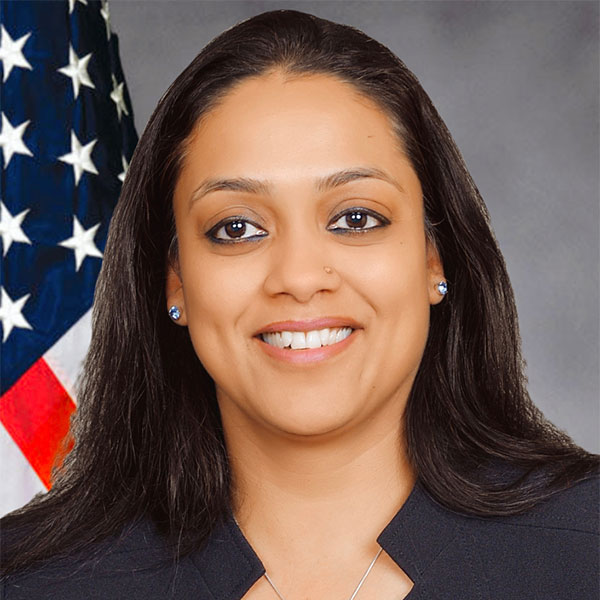Geographers in the Federal Government
The U.S. federal government is a large and growing user of geospatial information. Within the federal government, many geographers are employed as scientists, researchers, administrators, resource planners, policy analysts, project managers, technical specialists, and a host of other positions across a wide variety of agencies. The federal government has numerous, varied, and a constantly growing number of geography-related positions due to the expanding need for geographic expertise and analysis. Even in an era of declining government budgets, there are likely to be many outstanding opportunities for geographers in the coming years as geography plays an increasingly central role in informing efforts by agencies at all levels of the federal government.
A desire to contribute or “give back” to one’s country is an important motive for a career in the federal government. Equally important for many geographers are the unique intellectual, scientific, and personal opportunities presented by working at the federal level. Geographers are involved in developing management plans for national parks, forests, wilderness areas, wetlands, and waterways. They work at agencies such as NASA and NOAA designing, launching and using scientific data from world-class satellite remote sensing instruments to examine weather and climate change around the world. They provide robust evidence for policy-making at the U.S. Census Bureau, and help plan for and mitigate the impact of disasters in the field of emergency management. These jobs present opportunities at scales that might never be available in the private sector, or at the state and local level. Some of the most common areas where geographers find work in the federal government include:
In recent years the Department of Health and Human Services (HHS) has become increasingly reliant on GIS and geographic analysis. Within agencies such as the Centers for Disease Control and Prevention (CDC) and the National Institutes of Health (NIH), geographers provide key contributions studying and analyzing infectious-disease outbreaks, the spread of global pandemics, or discrepancies in health outcomes for rural and urban communities facing similar underlying disease conditions. The COVID-19 pandemic has further highlighted the importance and critical contributions of geographers in helping to inform the public about the virus’s spread. In the coming years geographers and GIS experts will increasingly be called upon for these critical tasks.
Geographers are employed widely throughout foreign policy-oriented federal departments and agencies including the State Department, Department of Defense, the National Geospatial-Intelligence Agency (NGA), the Central Intelligence Agency (CIA), the National Security Agency (NSA), intelligence branches within each of the armed services, and intelligence units within other executive departments such as the Departments of Energy and Homeland Security. Within these agencies geographers play critical roles that help shape foreign policy considerations, from providing maps that reflect the foreign policy standards and agreements of the federal government, to presenting information on the social and humanitarian context of maps and satellite images, to overseas deployments related to the diplomatic priorities of the State Department, to the surveillance and imagery expertise needed for critical military decision making, to providing cultural knowledge such as foreign language and foreign area expertise. The work of human geographers can involve the most sensitive and critical aspects of national security and provide exciting and unique challenges.
Federal agencies such as the Environmental Protection Agency (EPA), the National Oceanic and Atmospheric Administration (NOAA), the National Aeronautics and Space Administration (NASA), and others employ geographers to help solve problems ranging from climate change, to water resource management, to habitat restoration for endangered species, to the analysis of commercial fishing patterns. Using their expertise in geospatial analysis and GIS, geographers within these agencies are able solve problems at a variety of spatial scales and contexts and often contribute vital information central to their agencies’ missions.
In an increasingly interconnected world, innovative solutions are required to deal with local, regional, national, and global emergencies ranging from severe weather occurrences, to economic crises, to pandemic events. Federal agencies such as the Federal Emergency Management Agency (FEMA) and Department of Homeland Security develop national policy and build capacity to prepare, respond, and recover from critical incidents. Within these agencies, geographers contribute to the emergency management field in numerous ways, from mapping hazards and developing notification systems, to disaster mitigation, to detecting oil spills or other human-environmental hazards.
Federal agencies such as the U.S. Geological Survey (USGS) employ significant numbers of geographers, where they help lay the groundwork for significant policy and regulatory actions. USGS geographers have, for example, provided critical research on the earth’s climate and the related topics of global change and species migrations that have directly contributed to decisions related to U.S. climate change policy. The research of geographers has advanced the use of ecosystem services and related science in conservation, restoration, resource management, and development decisions.
The U.S. Department of Transportation (DOT) often relies on geographers and GIS experts for analyzing federal road projects, highway safety, or heavily traveled aviation routes. Geographers provide key geospatial insights that help inform the planning of new public transportation infrastructure such as interstate highways, bridges, railroads, airports, maritime and waterway routes, and public transit systems. Geographers working at agencies such as the Bureau of Transportation Statistics (BTS) provide key geospatial metrics ranging from federal freight transportation data and commodity flows, to commercial aviation data, to modeling the effects of increased fuel efficiency standards for commercial and private automobiles.
In addition to those detailed above, there are many other federal agencies, laboratories, and research centers that employ geographers, such as the Oak Ridge National Laboratory, an applied science and technology research center in Tennessee; the National Renewable Energy Laboratory in Colorado; the National Park Service; and the U.S. Forest Service. The U.S. Census Bureau is perhaps the largest employer of professional geographers in the federal government. Many geographers work within the Bureau’s Geography Division, which works with state and local governments to identify boundary changes and groups Census data into units known as Census Tracts, Block Groups, Blocks, and Census-Designated Places. These groupings are a key part of federal, state, and local efforts to divide and allocate billions of dollars in federal funding for vast numbers of programs. Population data developed by the Geography Division is also critical to state efforts to determine congressional and state-level legislative districts.
Video Interviews with Public Sector Geographers
Pete Chirico, Research Geographer for the U.S. Geological Survey, talks about how geography applies to his work at the USGS
REAL-WORLD EXAMPLES
Profiles of geographers
Learn more about geography as a field of study and about careers from geographers working in education, business, nonprofit organizations, and government agencies. Read about why they chose to pursue geography and how a career can be exciting, meaningful, and successful! Don’t see a particular geographer you think should be spotlighted? We’re open to suggestions!

Suparna Das, Branch Chief Supervisory Statistician at the Treatment Services Branch, Center for Behavioral Health Statistics and Quality, Substance Abuse and Mental Health Services Administration

Melanie Vanderhoof, Research Geographer, U.S. Geological Survey

Xiaohui Liu, Postdoctoral Intramural Research Training Awardee, National Institutes of Health
Who Hires Geographers?
The following lists include over 330 public sector employers and are based on a review of 61 geography department alumni webpages.
State/Local/Regional Government Employers: Adams County, Pennsylvania Agricultural Land Preservation Program, Alameda-Contra Transit, Arizona Conservation Corps, Arkansas Department of Health, Arkansas Geographic Information Office, Arlington County Government, Atlantic City, New Jersey, Austin Energy, Austin Resource Recovery, Bay County, Michigan, Berks County, Pennsylvania Planning Commission, Boise Natural Resources Conservation Department, Borough of Emmaus, Pennsylvania, Boston Public Schools, California Coastal Commission/Califronia Dept. of Boating & Waterways, California Coastal Conservancy, California Department of Conservation, California Department of Fish and Game, California Department of Fish and Wildlife, California Department of Transportation, California Department of Water Resources, California Public Utilities Commission, California Water Boards, CalRecycle, Chester County, Pennsylvania, City of Albuquerque, New Mexico, City of Allentown Engineering Department, City of Arvin, City of Ashland, Kentucky, City of Athens Engineering and Community Development Department, City of Austin Office of Sustainability, City of Austin Planning and Zoning, City of Austin Urban Forestry, City of Avondale, Arizona, City of Bath, Maine, City of Bethlehem, Pennsylvania Department of Planning and Economic Development, City of Bluefield, West Virginia, City of Cedar Park, City of Charlotte, North Carolina, City of Chico, City of Cincinnati Police, City of Clovis, City of Columbia, South Carolina, City of Covington, Kentucky, City of Decatur Planning Department, City of Emeryville, City of Fayetteville, City of Florence Planning Department, City of Florence Utilities Department, City of Franklin, Tennessee, City of Frederick, Maryland, City of Gastonia, North Carolina, City of Geneva, City of Goleta, City of Greenfield, Indiana, City of Hattiesburg, City of High Point Public Services, City of Horseshoe Bay, Texas, City of Humana, Louisville, City of Huntsville Planning Department, City of Lake Elsinore, City of Lakewood, Colorado, City of Lenoir, North Carolina, City of Lincoln, Nebraska, City of Los Angeles, City of Nashville Metro Planning Department, City of Norcross, City of Novato, City of Palo Alto, City of Pflugerville, City of Philadelphia Department of Planning and Development, City of Piedmont, City of Pinehurst, North Carolina, City of Plano, Texas, City of Reading, Pennsylvania Waste Water Treatment Plant, City of Rochester, New York, City of Saginaw, Michigann, City of Salisbury, Maryland, City of San Antonio, City of San Juan Capistrano, City of Santa Ana, City of Santa Maria, City of Santa Rosa, City of Sedona, Arizona, City of Shelby, North Carolina, City of Sheridan, Colorado, City of St. Augustine, Florida, City of Troutdale, Oregon, City of West Jordan, Utah, City of Wilmington, North Carolina, City of Worcestor, Massachusetts, Clay County, Minnesota Utility Authority, Clearfield City, Utah, Clinton County, Pennsylvania GIS Department, Cobb County, Georgia, Collier County, Florida, Colorado Governor’s Office of Information Technology, Connecticut Department of Energy and Environmental Production, County of DuPage, County of Sacramento, County of San Diego, Crows Nest Natural Area Preserve, D.C. Office of Zoning, Delaware Valley Regional Planning Commission, Draper City, Utah, Dubuque County, East Bay Municipal Utility District, East Central Wisconsin Regional Planning Commission, Erie County Department of Environment and Planning, Fairfax County Police Department, Fitzgerald Marine Reseve, Forest Preserve District of Will County, Illinois, Franklin County, Alabama, Franklin County, Washington, Georgia Department of Transportation, Greater Buffalo Niagara Regional Transportation Council, Hamilton County, Tennessee, Harnett County, North Carolina, Hendricks County Engineering Department, Heritage Museum and Gardens, Massachusetts, Herriman City, Utah, Howard County Planning and Zoning Development, Idaho Department of Environmental Quality, Indiana Department of Environmental Management, Indiana Department of Transportation, Intelligent Transportation Systems and Traffic Management at the Kentucky Transportation Center, Iowa Department of Agriculture and Land Stewardship, Iowa Northland Regional Council of Governments, King County, Washington, Kutztown, Pennsylvania Planning Commission, Lancaster Area, Pennsylvania Sewer Authority, Lancaster County Conservancy, Lancaster County, Pennsylvania GIS Department, Lancaster County, Pennsylvania Planning Commission, Lebanon County, Pennsylvania Planning Department, London Tubes System, Louisiana Coastal Protection and Restoration Authority, Lower Colorado River Authority, Luzerne County, Pennsylvania Planning Commission, Lycoming County, Pennsylvania Planning, Maine Historic Preservation Commission, Marin County Department of Public Works, Maryland Department of Agriculture, Maryland Department of Natural Resources, Maryland Environmental Service, Maryland National Capital Park, Massachusetts Department of Fish and Game, Massachusetts Water Resource Authority, MATBUS, Medina County, Ohio, Mesa Arts Center, Arizona, Metro Analytics and Active Planning, Utah, Metropolitan Development & Housing Agency of Nashville, Miami Valley Regional Planning Commission, Michigan Department of Health and Human Services, Minnehaha Creek Watershed, Minnesota Department of Agriculture, Minnesota Department of Natural Resources, Minnesota Green Corps, Minnesota Pollution Control Agency, Montana Department of Environmental Quality, Montgomery County Planning Department, Murray City, Utah, Nashua Regional Planning Commission, Natural History Museum of Utah, New Castle County, Delaware, New Jersey Department of Environmental Protection, New York City Department of Finance, New York City Emergency Management, New York City Parks, New York City Police Department, New York City Public Safety GIS Data Development Center at OEM, New York Department of City Planning, New York State Department of Environmental Conservation, New York State Department of Transportation, New York State Energy Research and Development Authority, New York State Office of Parks, Recreation and Historic Preservation, New York State Soil & Water Conservation Committee, Niagara County Center for Economic Development, North Carolina Department of Environmental Quality, North Dakota Geological Survey, Office of the Bronx Bureau, Ogden City, Utah, Ohio Department of Natural Resources, Ohio Kentucky Indiana Regional Council of Governments, Oklahoma City, Oregon Department of Forestry, Oregon Parks and Recreation Department, Orleans County, New York, Osterville Village Library, Pender County, North Carolina, Pennsylvania Department of Environmental Protection, Pennsylvania Department of Transportation, Pima County, Arizona, Plumstead Township, Pennsylvania, Putnam County, New York, Regional Development Commissions of Minnesota, Rowan County, North Carolina, San Diego Airport Authority, San Diego Association of Governments, San Francicso Department of Public Health, San Francisco County Transportation Authority, San Francisco Department of the Environment, San Francisco International Airport, San Francisco Planning Department, San Francisco Recreation & Parks Dept., Sandy City, Utah, Santa Clara County, Santa Clara Valley Water Department, Santa Cruz County Planning Department, Savannah Area GIS, Scurry County, Texas, Shelby County, Tennessee, Sonoma County Agricultural Preservation & Open Space District, Sonoma County Water Agency, Sonoma-Marin Area Rail Transit, Southwestern Pennsylvania Commission, St. Paul, Minnesota City Council, State of Michigan Department of Technology, Management and Budget, State of Oregon Department of Geology and Mineral Industries, State of Washington, Texas Archaeological Research Lab, Texas Commission on Environmental Quality (TCEQ), Texas Department of Transportation, Texas General Land Office (GLO), Texas Natural Resources Information System, Texas Parks and Wildlife, Texas Railroad Commission, Texas Water Development Board, Three Rivers Park District, Minnesota, Three Rivers Regional Commission, Town of Cheektowaga, New York, Town of Hamburg, New York, Town of Indian Trail, North Carolina, Town of Lancaster, New York Highway Department, Town of Lewisville, North Carolina, Town of Mooresville, North Carolina, Town of Orchard Park, New York, Town of Sudbury, Massachusetts, Town of Westford, Massachusetts, Tri-County Regional Planning Commission of Illinois, Upper Merion Township, Pennsylvania, Urban Planning Department of Massachusetts, Utah Department of Transportation, Utah Rivers Council, Utah Transit Authority, Vigo County Area Planning, Village of Algonquin, Village of Orland Park Department of Public Works, Village of Vernon Hills, Virginia Department of Transportation, Wake County, North Carolina, Walnut Creek, Wapsi River Environmental Education Center, Washington State Department of Ecology, Washington State Department of Fish and Wildlife, Washington State Department of Transportation, Wayne County, West Virginia, West Virginia Department of Environmental Protection, West Virginia Department of Highways, West Virginia State Tax Department, Westchester County, New York, Western Shasta Resource Conservation District, Whatcom County, Washington, Wisconsin Department of Natural Resources, Wisconsin Department of Transportation, Yadkin County, North Carolina
Federal Government/Research Centers/Military/National Parks/Intergovernmental Agencies/Foreign Government/Other Government Employers: American Museum of Natural History, Argonne National Laboratory, Center for Earth Resources Observation and Science, Centers for Disease Control and Prevention, Central Intelligence Agency, Chattahoochee-Oconee National Forest, Defense Mapping Agency, Department of Transportation, Don Edwards National Wildlife Reserve, Federal Aviation Administration, Federal Bureau of Investigation, Federal Emergency Management Agency, Geological Survey of Norway, Georgia National Guard, Glacier National Park, Grand Tetons National Park, Los Alamos National Laboratory, NASA’s Land Processes Distributed Active Archive Center, National Aeronautics and Space Administration, National Climatic Data Center, National Endowment for the Hunamities, National Geospatial Intelligence Agency, National Oceanic and Atmospheric Administration, National Park Service, National Photo Interpretation Center, National Science Foundation, National Security Agency, National Severe Storms Laboratory, National Weather Service, National Wildlife Federation, Naval Research Laboratories, Oak Ridge National Laboratory, Organization for Economic Cooperation and Development, Pacific Northwest National Laboratory, Patuxent Wildlife Research Center, Pennsylvania Air National Guard, Rocky Mountain National Park, Rocky Mountain Research Station, San Francisco Maritime National Historic Park, Sandia National Laboratories, Sequoia & Kings Canyon National Parks, South Korea Ministry of National Defense, Tennessee Valley Authority, The Presidio Trust, U.S. Agency for International Development, U.S. Army, U.S. Army Corps of Engineers, U.S. Army Engineer Research and Development Center, U.S. Bureau of Land Management, U.S. Census Bureau, U.S. Department of Agriculture, U.S. Department of Defense, U.S. Department of State, U.S. Environmental Compliance Office, U.S. Environmental Protection Agency, U.S. Forest Service, U.S. Geological Survey, U.S. Green Building Council, U.S. Housing and Urban Development, U.S. Military Academy, West Point, U.S. Mine Safety and Health Administration, U.S. Securities and Exchanges Commission, World Bank Group, Yosemite National Park
